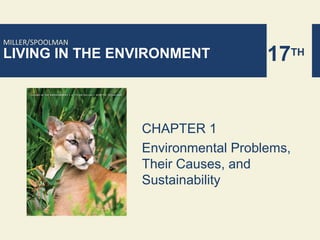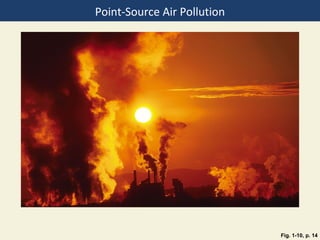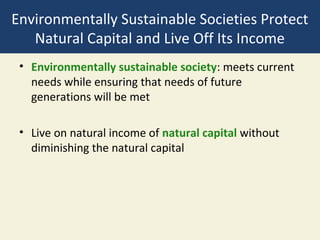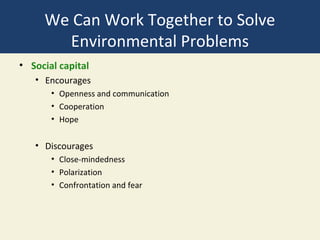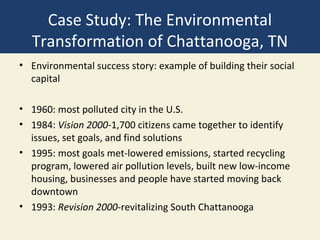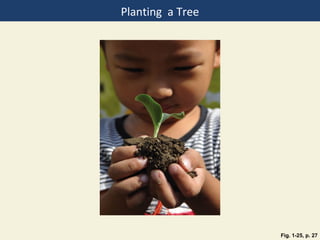1) Environmental science connects information from natural sciences, social sciences, and humanities to understand how nature works, how the environment affects us, how we affect the environment, and how to deal with environmental problems sustainably.
2) There are four basic causes of environmental problems: population growth, wasteful resource use, poverty, and failure to include environmental costs in market prices.
3) Sustainability requires living off the income generated by natural capital without diminishing the natural capital itself.
